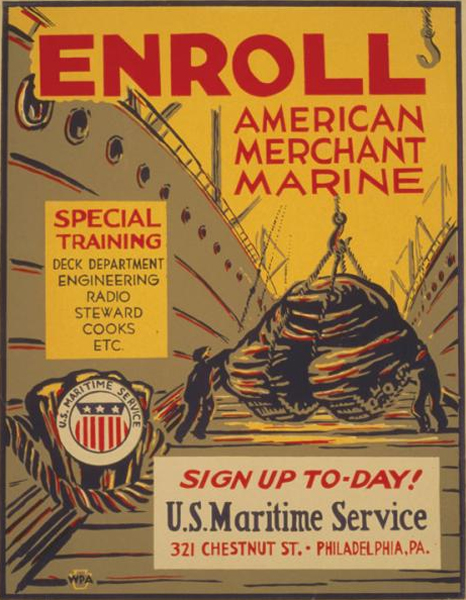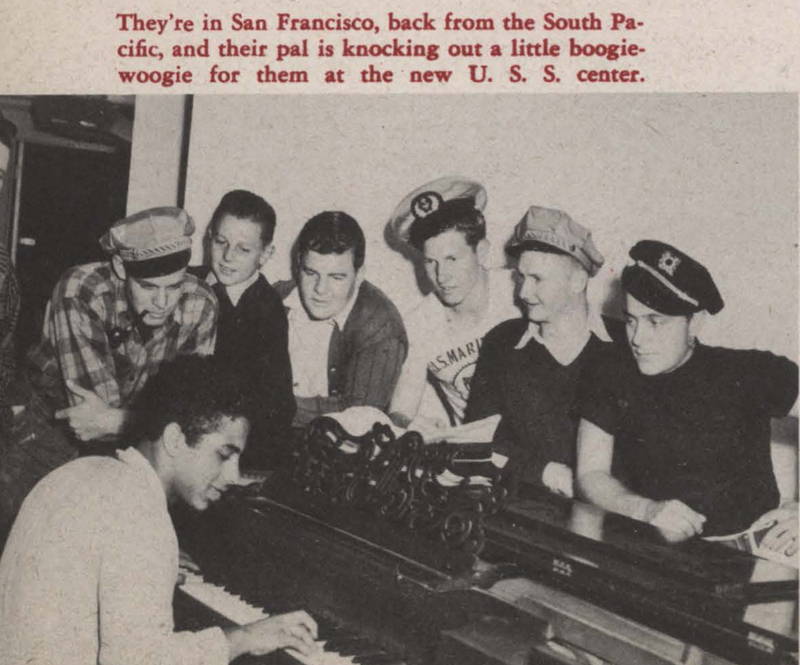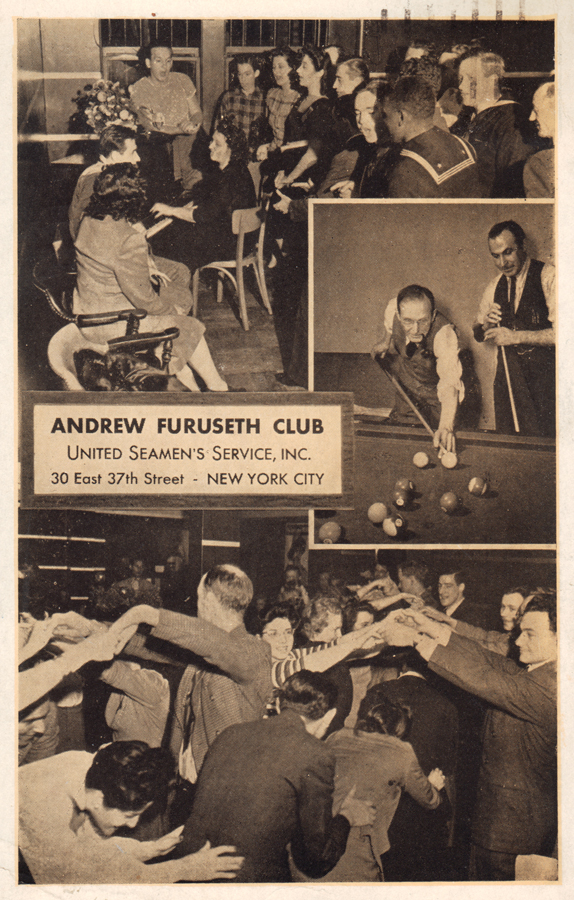Lincoln Cushing, Kaiser Permanente Archivist and Historian 2011-2021
Author's note: This article was originally posted on "A History of Total Health" blog 11/10/2015 and "unpublished" (likely due to a corporate communications perspective that it was too "out of scope" regarding strict messaging alignment regarding health care efforts and use of the historically-accurate word "Negro") in mid-2021, republished here as a public service 8/7/2021.
War is hell.

One of the grim metrics of conflict is the casualty rate. During World War II every branch of the U.S. Armed Forces lost combatants, but none suffered as high a proportion as those in the United States Merchant Marine – who weren’t even in the military. Mariners suffered the highest rate of casualties of any service, losing 3.9 percent of their 243,000 members, more than the 3.7 percent of the U.S. Marines.
An earlier blog post laid out the background on the role of the wartime Merchant Marine and their struggle for visibility and benefits. In 2015 two legislators introduced HR563, the World War II Merchant Mariners Act, which would recognize surviving seamen “for their bravery and sacrifice” and award them $25,000 each; it's still pending in 2021.
However, few know of the support that famed World War II shipbuilder Henry J. Kaiser offered those mariners during the war.
With the urging of maritime unions, the United Seamen’s Service was created August 8, 1942, by the War Shipping Administration with the approval of President Franklin D. Roosevelt to provide facilities for rest, recreation and safety for seafarers who carried troops and war materials to ports in the war zones. Eventually more than 125 locations would be established worldwide.

It was turned over for private operation and ownership on September 13, 1942. Henry J. Kaiser was the first president, and the War Shipping Administration’s Admiral Emory S. Land was chairman of the board.
“United Seamen's Service Opens Recreational Club” in The New York Age from October 17, 1942, describes the opening of the first USS facility. The club was named for Andrew Furuseth (1854-1938), a central figure in the formation of two influential maritime unions: the Sailors' Union of the Pacific and the International Seamen's Union. A Kaiser-built Liberty ship named after Furuseth would be launched the next month, on September 7, 1942, from Kaiser Richmond shipyard number 1.
Officers and men of the American Merchant Marine, many of them survivors of ships sunk by the enemy, cheered Wednesday as the United Seamen's Service opened for their exclusive use, the first of a coastal chain of recreational clubs at 30 East 37th street.
The staid, brownstone, four story building, owned by Mrs. Julius S. Morgan and situated within a few doors of J.P. Morgan's home, was "dressed" for the occasion from roof to basement with code flags and burgees, as a band played nautical airs. Accustomed to cramped accommodations aboard ship, the seamen praised the club's spacious and luxuriously appointed lounge rooms, game rooms, library and the dance floor with its modernistic bar.
Speaking at the opening of the club, Douglas P. Falconer, national director of United Seamen's Service, declared that the neglect of human needs of seamen was a disgrace to the nation. He promised that his organization would do its utmost to "rub out that disgrace.”

In describing the program of the United, Seamen's Service…Mr. Falconer said: "We'll look after every American seaman picked up by a rescue ship and landed in a strange port far from home. If he needs medical care, well see that he gets it on the spot. We'll replace his lost clothes and papers, notify his folk at home. We’ll see that he gets proper food and rest and freedom from worry over how he's going to get back home and on another ship. For that's all the men themselves ask is a chance to get patched up so that they can go to sea again!
A January, 1943 article in The Crisis (official magazine of the National Association for the Advancement of Colored People) expanded on the USS’s impact on social justice:
The United Seamen’s Service is outstanding in that the set-up makes no provision for discrimination because of race or creed. Rest homes are planned in many of the southern seaboard communities where merchant seamen will live together without special provisions being made for Negroes…
With the existence of separate USO centers within the army camps and separate canteens for white and Negro soldiers, the action of the United Seamen’s Service presents a lesson in practical democracy that may well be copied by many other groups, including the United States Navy, Army, and Marine Corps.
Henry J. Kaiser was called the “Patriot in Pinstripes” for his contributions during World War II, but his social justice legacy extended to Home Front veterans without uniforms as well.
Images:
WPA poster recruiting for U.S. Maritime Service, 1942; image courtesy Library of Congress
"Merchant Seamen Have Own Club" wire service photo, 10/22/1942
Postcard, Andrew Furuseth Club, circa 1943.
Return to Docs Populi - Documents for the Public